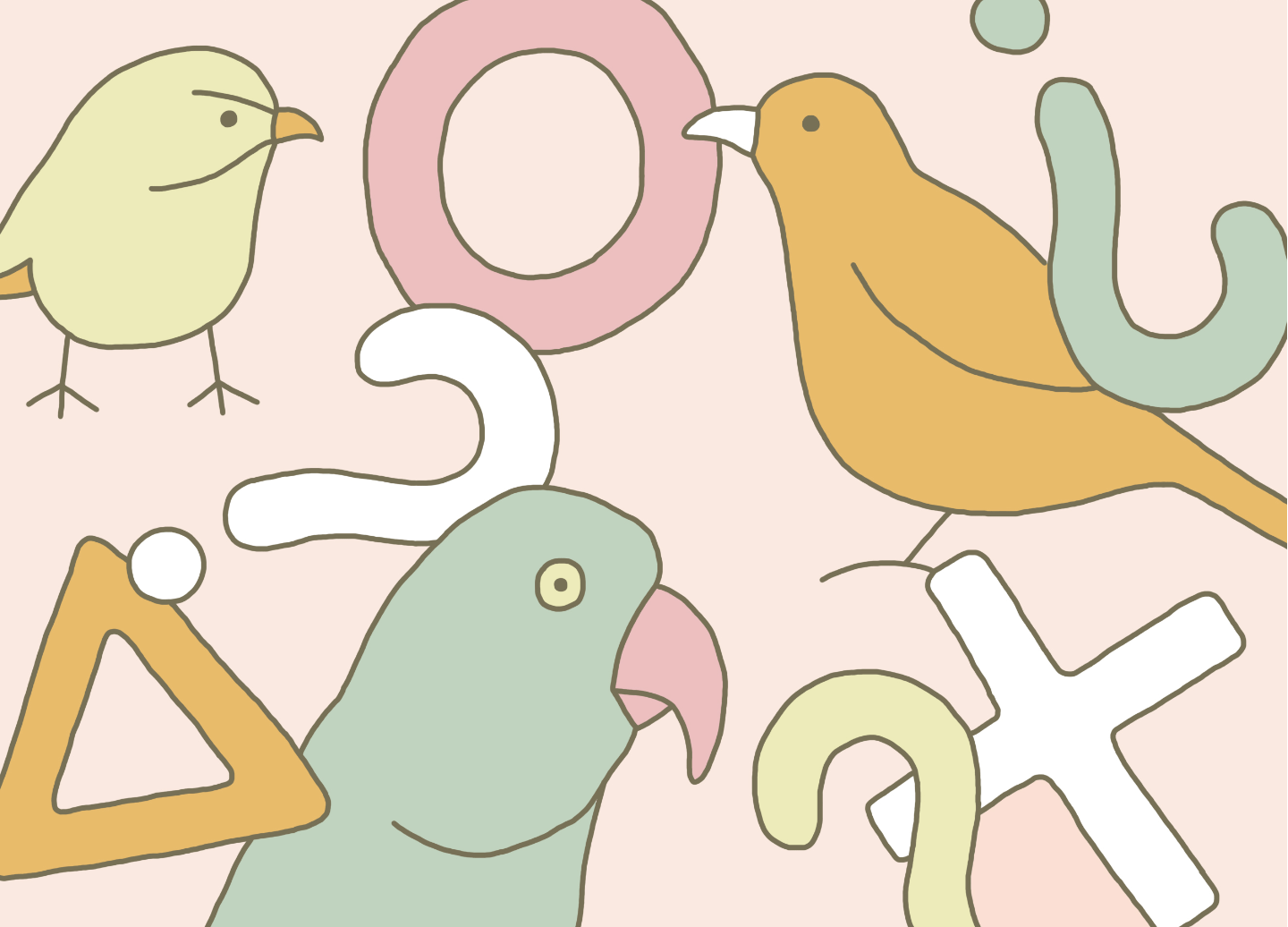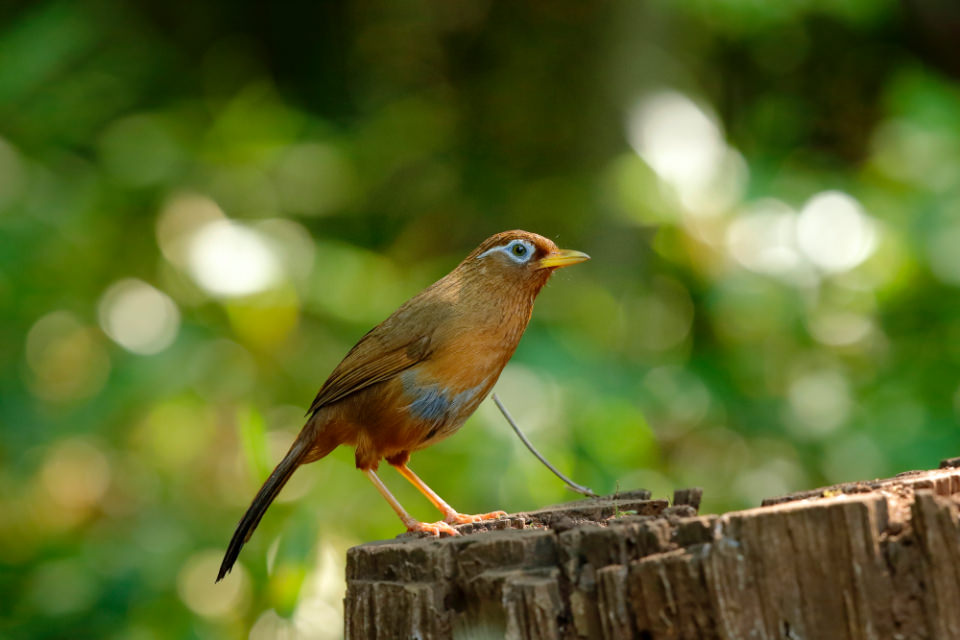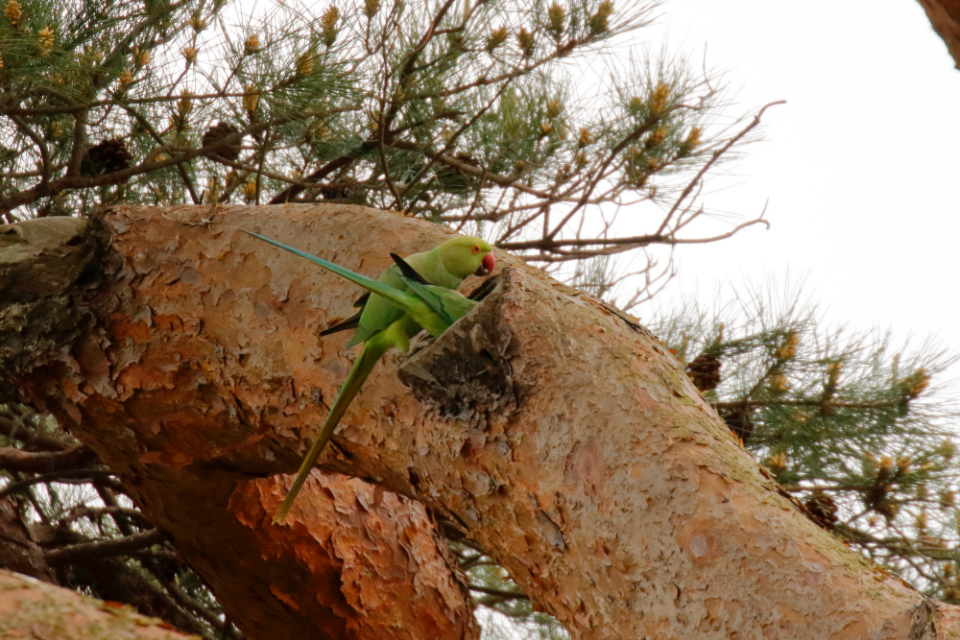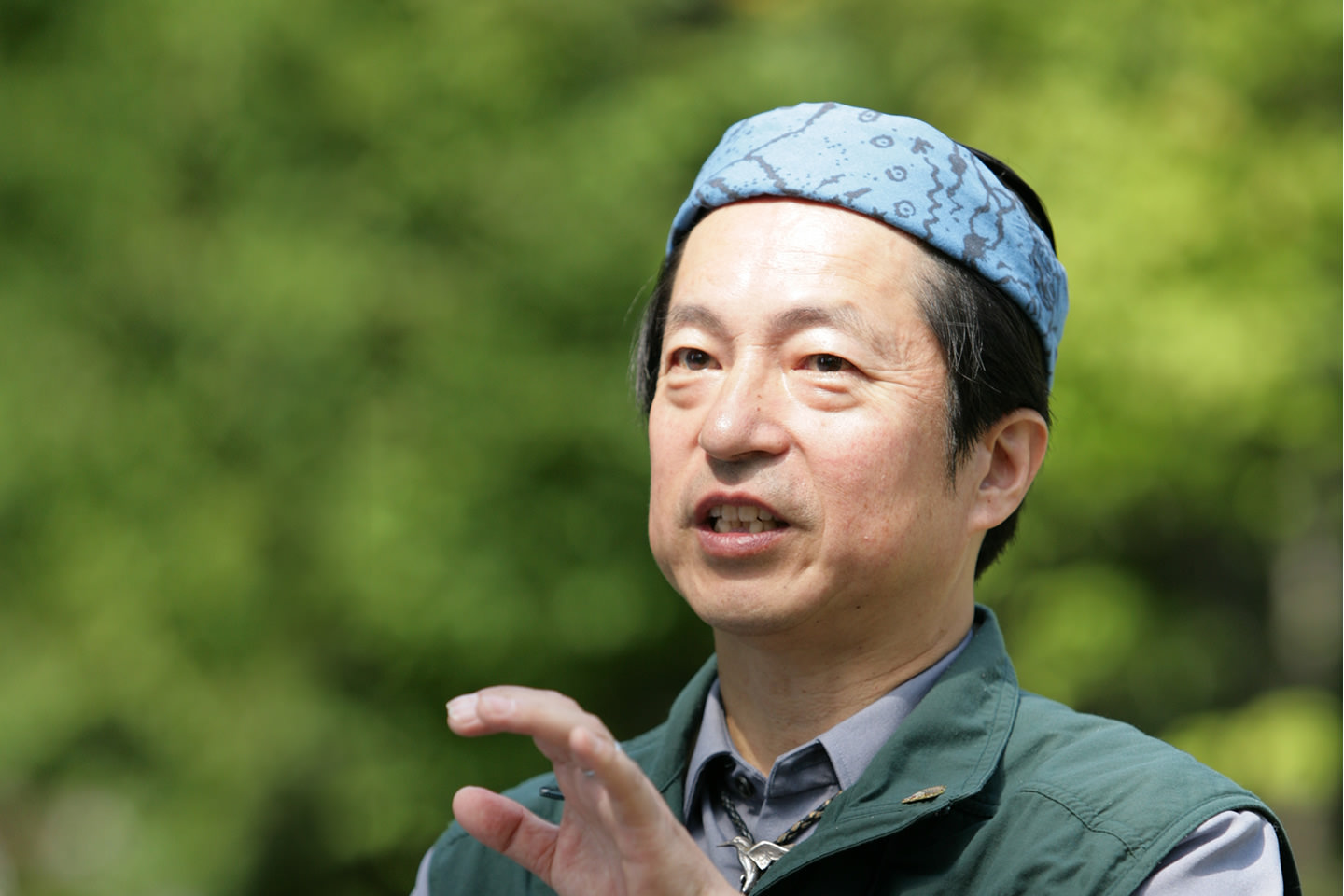What birds tell us vol.5
Are outsiders troublemakers?


A non-native species is a plant or animal that is not originally found in a certain area but has been brought in by humans, so pets, livestock, poultry, and even garden plants would be non-native species to the local ecosystem. There are non-native species all around us, but it becomes a problem if, through their invasion into the wild and subsequent settlement, multiplication, or dispersion, they adversely affect the ecology and the agricultural industry. Non-native species that could cause harm to humans, including insects such as the fire ant, spiders such as the redback spider, and turtles such as the snapping turtle, are often cited by mass media. In contrast, non-native bird species do not cause such a commotion, but is there no cause for concern?
Among the birds introduced in the bird photo guide, the influence of the migrant Japanese White-eye on native species in Hawaii, the issue of crossbreeding between Mallards and domestic ducks, and the why and how as well as the pros and cons of the domestication and reversion of the Rock Dove to the wild are touched on, and in this article we will get at the root of the problem of non-native species, examining three species that were brought to Japan as pet birds but later escaped captivity and became wild.
For example, the Chinese Hwamei originates from southern China and Southeast Asia, and as a southern bird it was thought that it would not spread as far north as the Sea of Japan or snow-covered regions. However, wild populations exist to the north-eastern part of Japan, demonstrating a marked expansion of its distribution. In Hawaii, it competes with native species for food and territory, and is one factor in the decline of native species.
The Red-billed Leiothrix, originally from the Himalayas into the south-western part of China, is a feral resident from the southern to the central part of Japan. And its numbers have increased in mountainous areas to the point of becoming a dominant species that is the most commonly or conspicuously found in a particular ecosystem. Studies have revealed an adverse effect on the nesting of native species, such once the Red-billed Leiothrix becomes wild, the Eurasian Jays as a predator are assembled to catch chicks of the Red-billed Leiothrix for their food and the Eurasian Jays attach other native birds, like the Japanese Bush Warbler as well.
Additionally, the Rose-ringed Parakeet, whose native range is India and Sri Lanka, becomes wild in the central area of Japan. Feeding on tree nuts and flowers in parks and gardens of residential areas, it nests in tree hollows, but comes into conflict with other birds who nest in tree hollows, including the White-cheeked Starling and the Brown Hawk-owl.
When birds such as this increase, some areas become filled with their song. The sound of local birds can no longer be heard there, but few people notice the problem.

When thinking about what problem exists and to what extent it exists, or what should be done about it, we should first become acquainted with the actual situation in the local ecosystem. What kind and how many species of living things (native species) were there originally? What kind of environment does each one live in, what do they eat, and who are their natural predators? Learning the answers to such questions helps us grasp the actual situation of an ecosystem with its complex network of relationships among a variety of species.
Fortunately, among ecological fields of study, the study of birds is growing. And, since birds are at the top of the ecological pyramid, learning about the habits of birds and the relationships between bird species is helpful in understanding an ecosystem as a whole. (See What birds tell us vol. 1 Why are birds a conservation indicator?)

In May 2019, the Intergovernmental Science-Policy Platform on Biodiversity and Ecosystem Services (IPBES), an international body comprised of governmental members from 132 countries worldwide, released a report summary for policymakers in which it sounded a warning that, among other things, “Around 1 million animal and plant species are now threatened with extinction.” It also stated “Without such measure there will be a further acceleration in the global rate of species extinction, which is already at least ten to hundreds of times higher, than it has averaged over the past 10 million years.” A contributing factor to this acceleration is the decline in biodiversity resulting from non-native species driving out native species.
Looking at it from the history of the earth, it could also be said that the extinction and evolution of living things and changes to ecosystems are very natural. As a result of human intervention, the problem is that the scale has grown and the pace has accelerated. It is said that, if we don’t take any action, biodiversity and ecosystem services *1 which provided the foundation of the prosperity of mankind are going to become completely unsustainable. In this situation, we need to execute the Sustainable Development Goals (SDGs) *2 globally.
For example, in urban areas already many species of plant are non-native species and people enjoy them. It is at the stage now where you should be happy to have native species growing in gardens, parks and along roadways, and there is also the possibility that soon you will no longer be able to find native species in the local ecosystem. Moreover, since small birds disperse the seeds of plants (see What birds tell us vol. 3 The secret of red tree fruits and berries), a new problem may arise of non-native garden plants becoming wild and more widely distributed as a result of birds eating their fruits or seeds.
*1 Ecosystem services are the benefits that humans freely gain from the natural environment. There are a variety of benefits, including not only the physical things provided by nature, such as foodstuffs and fibers, but also air and water purification, as well as places for recreation, including mountain climbing and fishing.
*2 The Sustainable Development Goals (SDGs) are 17 global goals from 2016 to 2030 stated in the 2030 Development Agenda which was set by the UN Sustainable Development Summit in September 2015. They were introduced as a successor of Millennium Development Goals (MDGs).
In response to the seriousness of the issue of non-native species in Japan, the Invasive Alien Species (IAS) Act was put into force in 2005 with the aim of “Preventing the adverse effects of IAS on ecosystems, human life and body, agriculture, forestry or fisheries,” and “Contributing to conservation of biodiversity, to protection of human life and body, and to make sound development of agriculture, forestry and fisheries industries.” The Act designates as invasive alien species the non-natives species brought into Japan that are causing problems; it regulates the raising, growing, storing, carrying, importing, and other handling of designated invasive alien species; and, it enforces control measures for IAS. For bird species, the Canada Goose, the Red-vented Bulbul, the Chinese Hwamei, the Moustached Laughingthrush, the White-browed Laughingthrush, the Masked Laughingthrush, and the Red-billed Leiothrix have been designated as invasive alien species.
Among these, the successful control of the Canada Goose is a rare success story. The Canada Goose is a species of large goose (some birds are more than 100 cm in length) originating in North America, which was introduced to Europe and New Zealand for sport hunting and domestication as pets, but its population increase came to be viewed as problematic. In Japan, the Canada Goose escaped into the wild and became settled in the 1980s, and as the population increased and its distribution began to expand, concern grew over the genetic disturbance caused by interbreeding with its close relative the Cackling Goose, an endangered species in Japan, and other problems such as damage to agriculture. However, a Canada Goose survey group was formed, measures centered on capturing adult birds and controlling breeding were enacted, and as a result, all feral geese were removed by 2014. It is believed that in addition to their large size and proclivity for open spaces, which made them easy to find, the success of this initiative was thanks to the implementation of measures before their distribution expanded too much.
And, it was also touched on in the profile of the Little Grebe in the Bird Photo Guide, but Grebe numbers have been declining at certain ponds recently because the small fish that serve as their main food source are being eaten up by alien fish species, such as a black bass. However, in some such ponds the elimination of alien fish species has led to the revival of the Grebe population. By draining the water from ponds and capturing the non-native fish species, native fish species are protected, and the ecosystem can be restored close to its original condition.

Until now we have looked at the problem of non-native species, but that is not to say that the non-native species itself is a villain. If you think about the many non-native species that are being used by humans, as livestock and poultry, or as agricultural crops and materials of medicine, the benefits are also great. It could be said that the use of a non-native species or the designation as a nuisance is up to humans. So we all must become better informed about living things and ecosystems. Let’s make an effort to learn about living things and ecosystems of our own region as much as possible. It is important to take responsibility for what we raise and grow in order to prevent the increase of non-native species. And, I would like to look at ecosystem services as well as regional culture, even local production for local consumption, and get to know as much as possible about the origins of plants and animals that are used in various ways, such as clothing, food and shelter.
writer
Wild Bird Society of Japan
In 1981, appointed Chief Ranger of Lake Utonai Sanctuary in Hokkaido, the first sanctuary designated by the Wild Bird Society of Japan.
Currently Consultant of the Wild Bird Society of Japan. Travels throughout Japan and the world giving lectures on wild birds, nature observation and environmental education. More than 450,000 copies of a wild bird field guide for which he provided commentary have been published.
